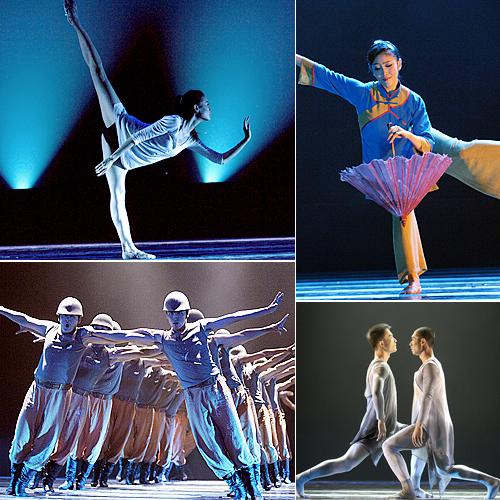|
 |
|
All photos were taken by Ye Jin at the Seventh China Lotus Award Modern and Contemporary Dance Competition in Ordos, Inner Mongolia Autonomous Region |
The Seventh China Lotus Award Modern and Contemporary Dance Competition was held on September 10-15 in Ordos, Inner Mongolia Autonomous Region. It was the second national professional modern and contemporary dance competition in China since 2005, and presented the highest level of contemporary and modern dance while showing the way for the development of the art in China.
Top quality
The event, jointly hosted by the China Federation of Literary and Art Circles (CFLAC) and the Chinese Dancers Association (CDA), attracted approximately 2,000 dancers from 60 professional dance troupes nationwide. A total of 13 modern dance works and 39 contemporary dance works competed for prizes, including best work, best choreography and best presentation.
Compared to previously, many new characteristics emerged in this competition, in terms of creativity, presentation and number of participants, and most of the works paid more attention to and reflected the contemporary lives of the Chinese, said Feng Shuangbai, Vice President of the CDA.
For a long time in China, modern dance has been an art with a small audience, which led to low numbers of both modern dance works and dancers. It had been difficult to hold a national modern dance competition because there were so few participants, said Feng. "This year was the first time the CFLAC and the CDA has held a national competition specially for modern and contemporary dance."
Apart from the high artistic quality of dancers, many dance works in this competition were very impressive because of their experimental, avant-garde ideas in creation and the dancers' understanding of life, said Feng.
Another new phenomenon was that the competition attracted a wider range of participants, including fledgling dance companies, freelance choreographers and college students, which showed the recent blossoming of modern dance in China, he said.
Besides, the themes of the dance works, especially of contemporary dance, were more extensive, covering every aspect of life and major social topics. For example, the work Roadmen, which won the gold prize, presented vividly, in dance language, the hardships of road construction workers. Another work, Regretless, which won the silver prize, portrayed a brave young man who lost his life in helping a lady on the road recover a handbag from bandits.
Thinking on modern dance
Regarding modern dance, an art form introduced to China 70 years ago, there were new trends that were worth thinking about, said Luo Bin, Director of the Institute of Dance Studies of the Chinese National Academy of Arts, and a member of the jury of the Ordos competition.
"From these modern dance works, we can see individual spirit has been presented very well. The works reflect free thinking and the desire of choreographers and dancers to express their individual ideas. At the same time, we also saw a variety of presentation methods, which feature either intense conflict of inner feelings or humorous choreographic styles," Luo said.
Solos, duets and trios were the majority of the works in the competition, Luo said. This means modern dance artists are inclining to the development of individuality and creativity.
He also said modern dance works in the competition reflected changes in creative concepts, which might be a sign of the burgeoning of the sinicization of modern dance.
"It might be too early to say it, but I think at least we found many choreographers are exploring on the road of sinicization," he said. "Because of the great variety of ways of presentation in modern dance, the traditional understanding of people about modern dance is changing. It is a gradual change, very delicate."
During the competition, audiences could easily find many traditional Chinese cultural and artistic elements in the works, which was very different from the traditional understanding of people of this art. It was also an interesting phenomenon to the jury, Luo said.
"Members of the jury had a heated discussion on following topics: Whether modern dance has lost its core characteristics in China? Whether Chinese modern dance creators have not found a clear direction for future development?" Luo said. "We need to clarify what modern dance should pursue. After all, modern dance is not just an art form, and it embodies people's concepts and ways of thinking."
He said currently many modern dance works in China lacked deep thinking or were staying in a state of imitation or repetition, which might be caused by unclear understanding of modern dance.
This, he said, was one of the possibilities of sinicization of modern dance, an inevitable phase of the development of the art form in China.
| 